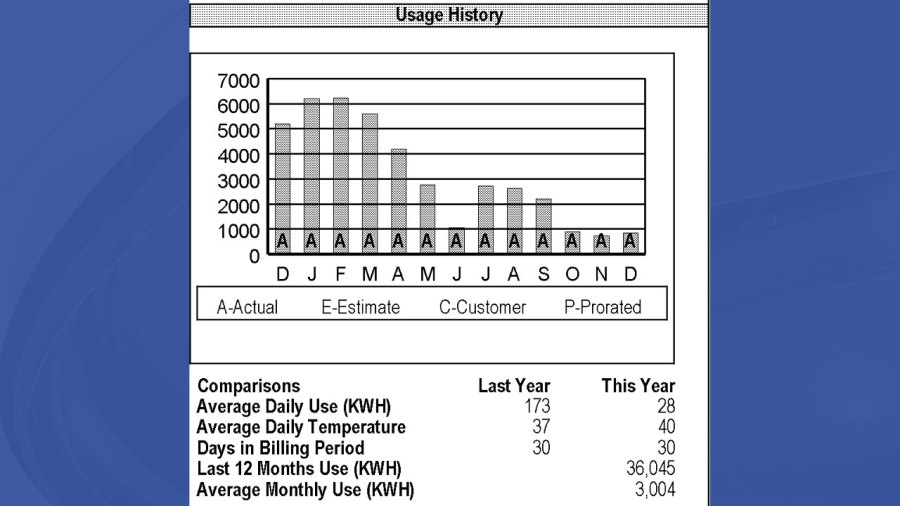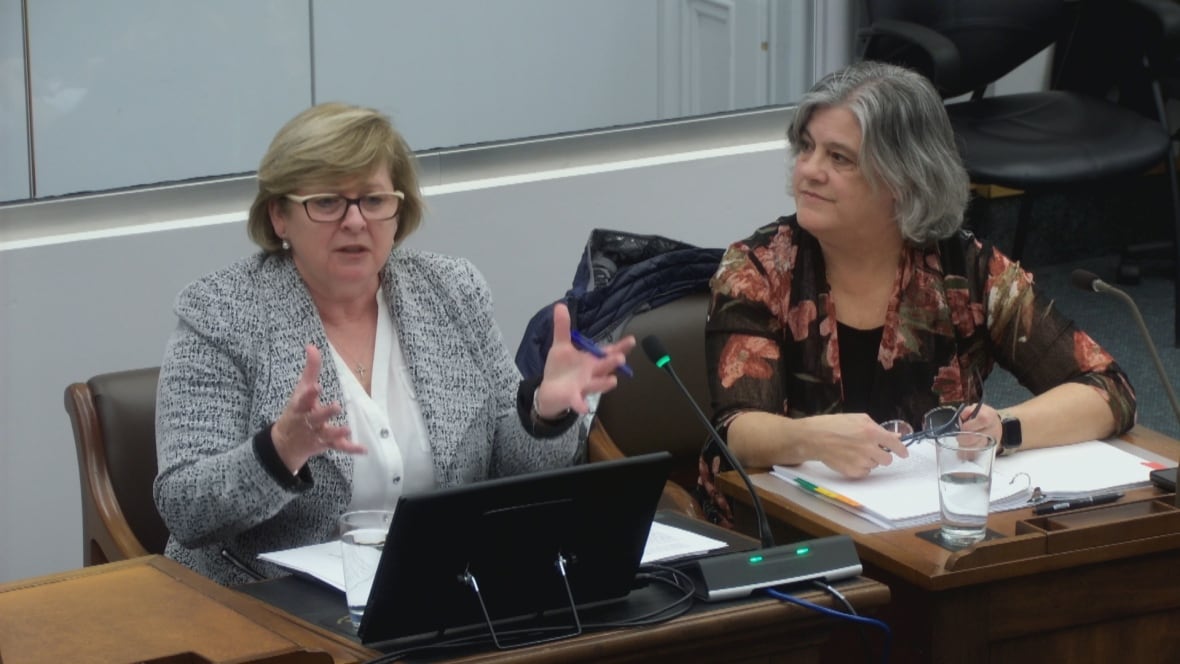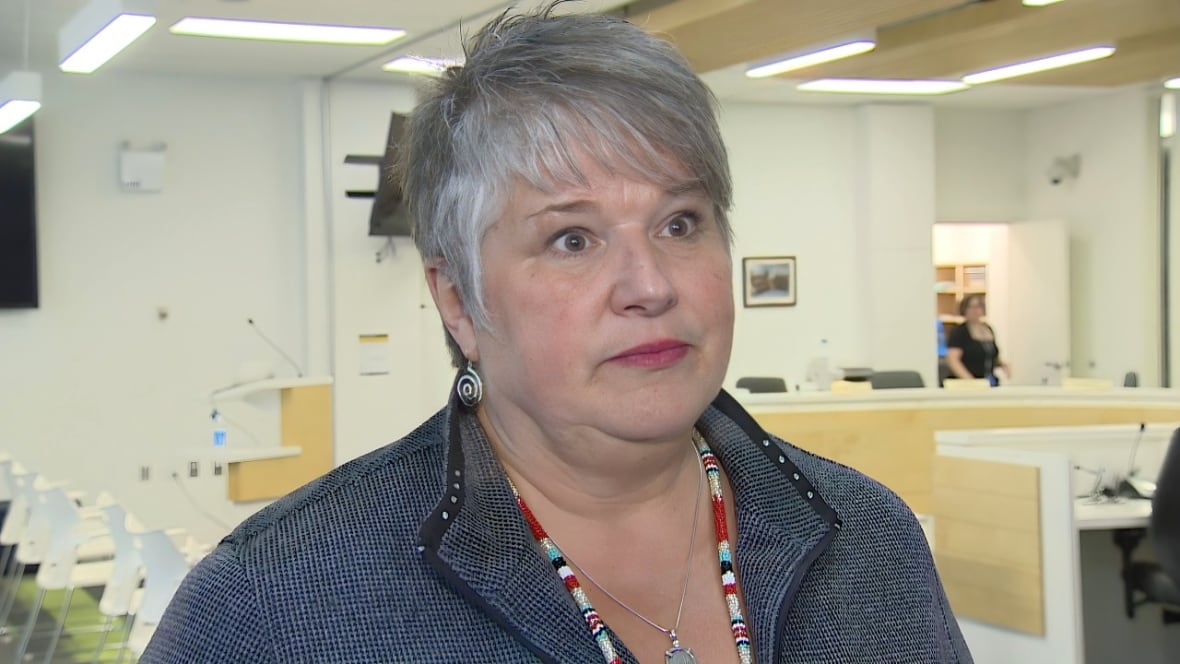MERCER, Pa. (WKBN) – We all take a look at our electric bill when it comes, but most of us focus on the dollar amount. If it seems normal, we pay it and that’s it. But what happened to a Mercer County couple is anything but normal, and their years-long battle with Penn Power is coming to a head.
Brett and Donna Schroyer live in a rural area of Mercer on Mercer West Middlesex Road. Brett built their home and knows the structure from the studs to the roof. The house is heated with a wood furnace, and there is space for Brett’s woodshop where he makes beautiful woodcarvings and carousel horses.
Living in the country comes with some added expenses, especially for utilities, but the Schroyers never expected what would happen when Penn Power put a smart meter on the home in 2011 and the bills started coming in.
“We started getting them actually a number of years ago, but by law, since we brought this, we can only back four years,” Donna said. “It was increasingly higher and higher, and finally, when I called them, they got me in touch with the Pennsylvania Public Utility Commission (PUC).”
A smart meter is a digital device that collects electricity usage information and sends that data to the local utility through a wireless network system, eliminating the need for on-site meter readers. They’ve been around since the early 2000s and have improved over time.
PennPower spokesperson Todd Meyers said that Pennsylvania law requires all large electric utilities operating in Pennsylvania to install smart meters, and that process has pretty much been completed. And while he couldn’t speak about the Schroyers’ particular issue, he said the new meters are very accurate at reading usage, with a very low failure rate.
“These meters have been found to be at least as accurate and probably more accurate than the meters that they replaced, so they are accurate to within 0.05 percent, 99.9 percent of the time,” Meyers said.
Meyers said that when new meters were installed and replaced the old dial ones, some customers may have noticed a change in their bill.
“Most of the time those dials actually spun more slowly and under-recorded the usage of electricity,” he said. “The vast majority of the time it was under recording usage so that’s probably why maybe some customers may have seen or thought they had a larger bill at the point where the smart meter was introduced because that smart meter is more accurate.”
Meyers said there are several variables that impact an electric bill, not only usage but the portion of the bill that comes from the electricity provider. While Penn Power provides the service and maintenance that carriers electricity from the source, those sources are deregulated and customers can choose their own or have Penn Power choose one for them. Depending on the rate, and if it’s variable or not, can impact monthly bills.
“We’re not saying the meters are infallible — the smart meters — but the vast, vast majority of the time they are accurate,” Meyers said. “When they are found to be inaccurate, oftentimes…. It’s a manufacturing defect with the hardware, that can be a problem. There could be a problem perhaps with the signal that’s communicating with the meter, maybe a weak signal problem. There are times that someone’s home wiring can cause an issue.”
Trying to figure out what spiked the Schroyers’ bills has been arduous. The bills were higher after the smart meter was installed and started piling up, so much so that they dipped into their savings and tried out a payment plan to catch up.
“It kind of pushes you back further… At one point, actually, right at the end of 2019, I think it was, 2018 or 2019, I took money out of our 401k and just paid it off. It was almost $4,000, and so it zeroed it out and then it started all over and now we’re up to $10,000 after paying $11,000 in these four years,” Donna said.
The Schroyers started to pay close attention to not just the dollar amount of their bill but their usage and discovered the meter was showing they were using double what the normal household of four would consume. The U.S. Energy Information Administration estimates that the average U.S. household usage is between 800 and 1,000 kilowatts per month or about 10,791 per year. Brett said his meter was showing he was using more than double that each year:
- 2020: 26,334 kWh
* 2021: 25,867 kWh
* 2022: 32,663 kWh
* 2023: 34,177 kWh
Brett considered his power tools in the workshop and his appliances but was confident that he was not pulling near what the smart meter was reading, so he hired a professional energy auditor to take a look.
The energy auditor tested everything and wrote in a report that he could not find anything that would be pulling the kilowatts that Brett and Donna’s bills were showing. The testing was meticulous.
“That’s kind of a thing because you have to turn everything in the whole place off and then painstakingly everything that uses electricity one at a time, turn back on so they check the parameters of that particular item,” Brett said.
Brett even bought a meter that would tell him when something in the house was running or pulling electricity and when it shut off and on, and everything seemed normal. The mystery continued and bills kept coming.
The Schroyers went as far as to start using the laundromat and shutting down parts of their home to get the bills down. Right now, they have a balance of about $10,000, which is the amount they are disputing.
The crux of their case came in 2023 when after they complained enough about their bills, Penn Power changed out their smart meter in September and the bill immediately went down. But Brett said that Penn Power told them that they tested that older meter and it was working properly, so the previous billing amounts would stand.
The table below shows the Schroyer’s usage from December 2022 to December 2023. The reduction in recorded usage drastically decreased after the new meter was installed. And those dips you see below when the usage went down before the meter change out in September 2023 was when the Schroyers said they shut down their house to save power.

The Schroyers wanted Penn Power to take an average of the kilowatts they were pulling with the new meter and adjust their past bills, but they say the utility was only willing to make about a $2,000 adjustment.
“They don’t care whatever the reading is, that’s the reading. Whatever the meter says, that’s what it is. Here’s my thing, mathematically, how is that possible with what we’ve got using our lights and our appliances? How is that mathematically possible to use 6,220 KW hours in a month?” Brett said.
The power company suggested that power tools in Brett’s woodshop could be the culprit, but the energy audit did not reflect that and it didn’t find an issue in the wiring or breaker boxes.
“They’re just asking for that $10,000, which I don’t think is fair, and then they can’t explain anything to us. We’ve gone through talking to an attorney for Penn Power. We were trying to negotiate something all summer long with them, and that was at the request of the PUC. And during those phone conferences that can’t explain it,” Donna said.
After those negotiations, the Schroyers decided to appeal to the Pennsylvania Public Utility Commission. A hearing is set for January 7.
If you believe you have an issue with your meter readings or usage call Penn Power at 1-800-720-3600. You can also check current rates for electric providers online at papowerswitch.com.
Chelsea Simeon contributed to this report.
#Local #couple #battles #smart #meter #readings #utility











Leave a Reply